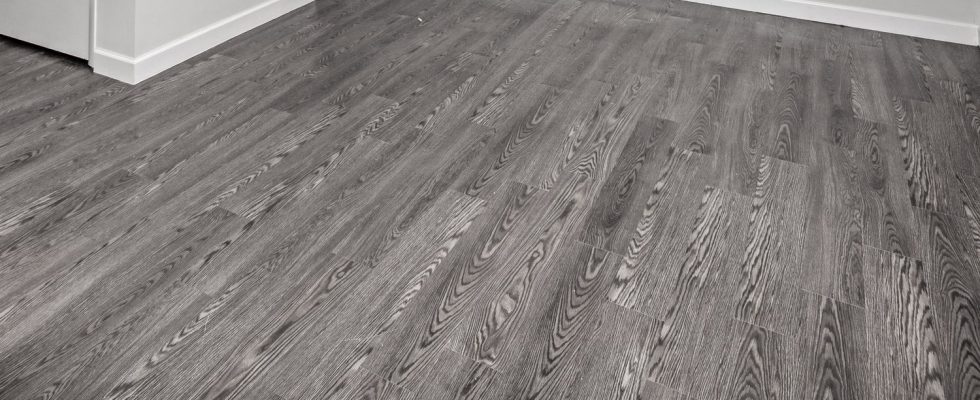Even if the weather is still unpredictable, spring is not that far away, and that makes you want to make projects: redo a room in the house for example, repaint the walls or change the floor covering, and in this area, the offers are numerous, but not always up to par. Hervé Cabibbo, rdeputy editor-in-chief of 60 Million consumers tested PVC floors, vinyls and linoleums this month.
franceinfo: First of all, what is the difference between PVC, vinyl and linoleum, is it the same composition?
Hervé Cabibbo: Linoleum, or “lino”, to put it more simply, is made exclusively from natural raw materials: a paste made from linseed oil and vegetable resin, which is mixed with cork powder, powder wood and pigments. It’s not plastic.
PVC coverings and vinyl coverings, on the other hand, are made of plastic. Their scientific name is polyvinyl chloride. The difference between the two is due to the manufacturing process, which means that PVC is generally more rigid than vinyl, and presented in the form of strips. Vinyl is thinner, therefore more flexible, and available in roll form.
What did your tests focus on?
Above all on the ability to resist the insults of everyday life. Like the furniture that we move, the chairs that we pull a little too roughly, the gravel that gets stuck under our shoes, everything that can leave a lasting mark on a covering. Concretely, we evaluated the resistance to scratches, abrasion, dirt, but also to punctures, that is to say the ability to resist a sharp object.
In terms of resistance to dirt, for example, we subjected our coatings to a mixture of earth, motor oil and redcurrant jelly. And it’s flawless, everyone passed the exam successfully. On the other hand, for the other tests, they arrive in very scattered order.
And which soils come out on top?
PVC, a little thicker and sold in strips, are undoubtedly the most resistant. Of the 10 references in our test, which includes 2 linoleum, 4 vinyl and 4 PVC, it is the latter which take the first 4 places in our performance tests, since that is what we call them.
Is vinyl the most fragile?
Very clearly. All of our vinyls have failed abrasion tests. They are sensitive to repeated friction of objects of a certain weight, to put it more clearly. The scratch tests are the stone stuck under the shoe for example, and the punching tests also confirm a certain fragility.
To go into more detail about this punching test, we apply a 1.2 cm diameter punch to the coating for 2 and a half hours, topped with a weight of 50 kilos. Which leaves marks visible to the naked eye. However, it is important to specify it, and it helps put this fragility into perspective, the marks end up disappearing over time, after a few weeks.
You also tested the substances contained and released by these different materials. Do product labels mention pollutants?
Since 2013, floor coverings, walls or ceilings, partitions, false ceilings, insulation materials, doors and windows, if they are intended for the interior of the dwelling, must display a “indoor air emissions label”. This label indicates their level of emission of volatile organic compounds, what are more commonly called VOCs.
These are polluting molecules which, for the most part, have the particularity of evaporating at room temperature. We thus measured the emission of these VOCs, for each coating, after 3 days and 28 days of installation. And we saw extremely variable emissions between references.
So, don’t panic, the concentrations are clearly below the thresholds that should not be exceeded. But we still penalized them because the coverings are not the only emitters of such substances in our interior. We thus considered possible accumulations.
In terms of price, are there big differences depending on the product?
It costs between 13 and 14 euros per square meter, on average, for vinyls. And between 30 and 45 euros per square meter, on average, for PVC and linoleum. PVC, as a reminder, the thickest and most resistant, but also linoleum, can therefore cost three times more than vinyl. Which can considerably change the “floor” budget of a large house to renovate.
What are the right questions to ask yourself before choosing a product? It all depends on the rooms you want to renovate?
The color, the pattern, you obviously have to select your covering according to aesthetic criteria. You have to buy the one you like of course. But without losing sight of the fact that a covering must be adapted to the room for which it is intended. First, I repeat, PVC and vinyl floors are plastic, and therefore waterproof. They are therefore perfectly suited to damp rooms, such as bathrooms, toilets or kitchens. But this is not at all the case for linos made from natural materials.
Then, certain coverings are reserved for an adult bedroom or an office, where traffic is less frequent. Others are suitable for living rooms and entrance halls, where the passages are much more important. Moderate use or intensive use: here, the information is not always clearly highlighted in stores, or on the labels, this is what we observed during our test. This is therefore a point to check before purchasing!
Last thing, maintenance: which floors are the easiest to maintain?
These are coverings that have a reputation for being easy to maintain. And that’s true. A vacuum cleaner, a dry sweep or using a trapeze broom fitted with a microfiber headband, and your PVC, linoleum or vinyl is like new. Be careful, no washing with plenty of water for linoleum which, once again, is not a plastic material.
For occasional stains, if they are acidic like vinegar or lemon, which can cause discoloration, use black soap diluted in hot water. That is to say a mild detergent. You can keep these floors for several decades, if you take great care of them.
